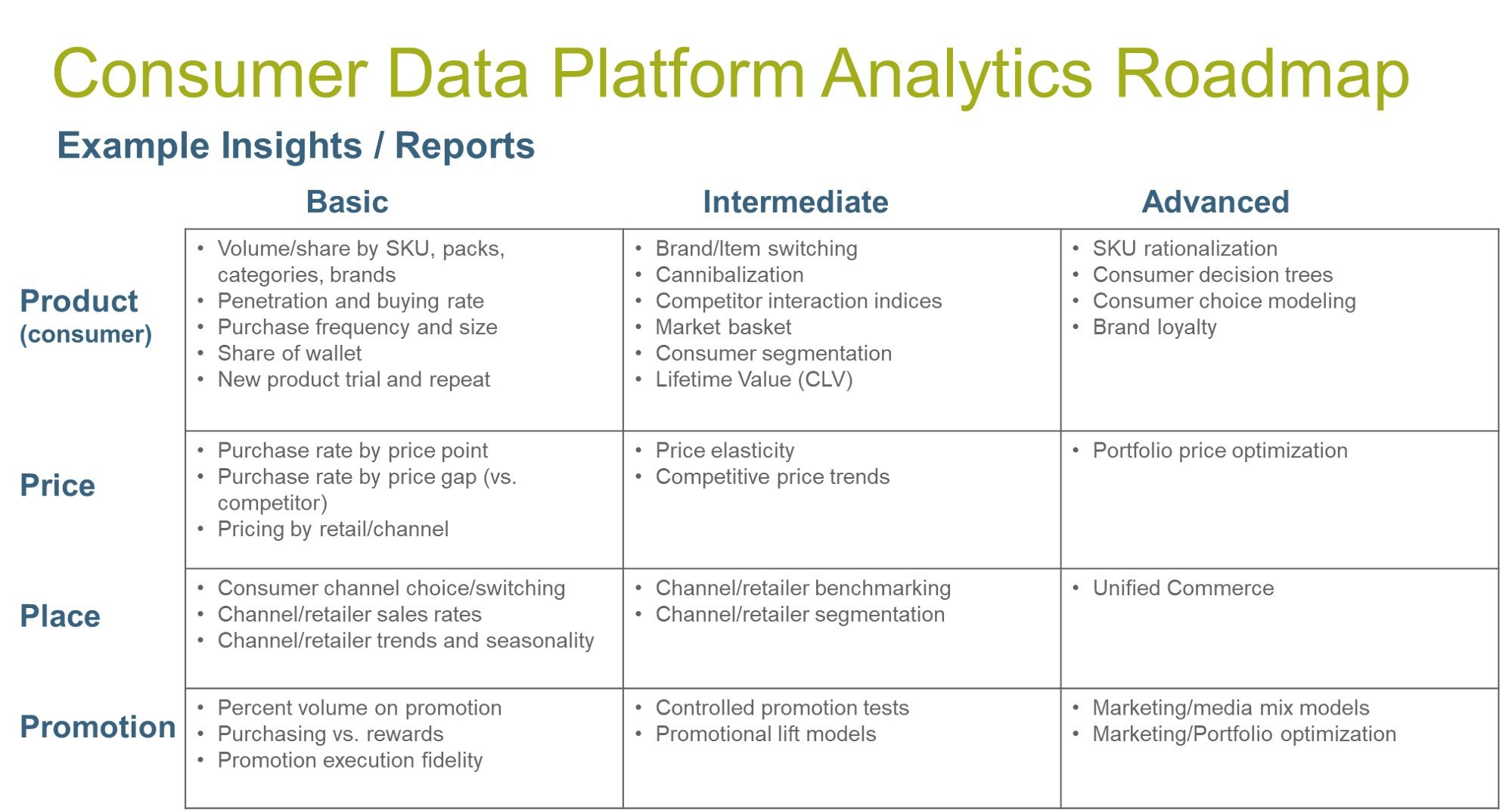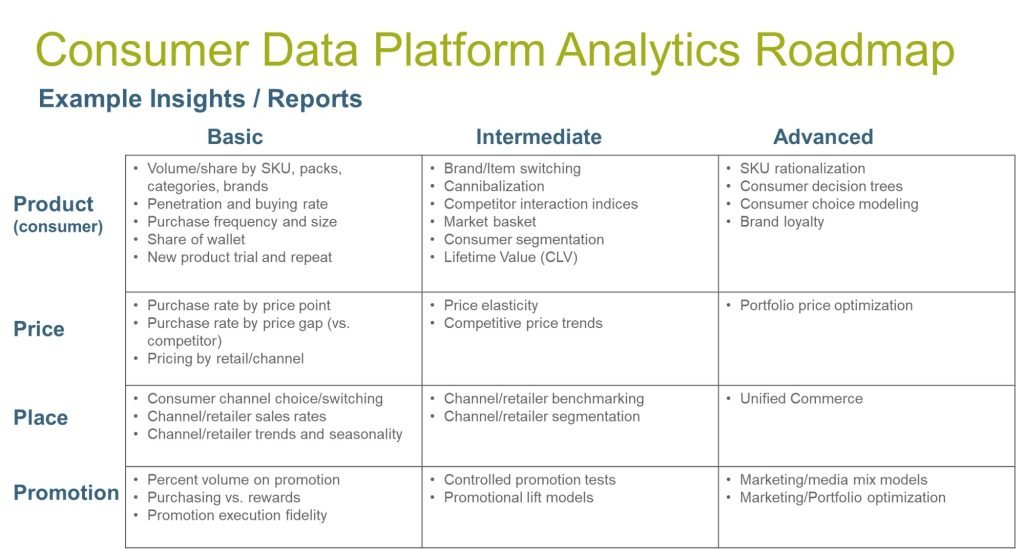Consumer Data Platforms in the CPG Industry

For the longest time, Consumer Packaged Goods (CPG) companies were limited mostly to mass marketing, unable to address consumers directly. That has changed, and with the emergence of Customer Data Platforms (CDPs), understanding and predicting consumer behavior is now more possible than ever.
A Customer Data Platform acts as a centralized hub for all consumer data, integrating various data sources to provide a unified, comprehensive view of each customer. This holistic approach enables CPG manufacturers to engage with consumers more personally and efficiently.
The table in the figure is an example of a roadmap that a CPG company can undertake, moving from basic through intermediate and advanced analytics. Examples of the types of analytics at each stage are broken out by the so-called traditional “4 Ps of marketing.” The table is meant to spur ideas and give examples.
One way of looking at Analytical Applications of CDP in CPG Marketing
By no means the only way to categorize things, the stages of the roadmap can be thought of thus:
- Basic Analysis: Understanding the fundamentals. CDP solutions at the basic level analyze item-level data (brands, packs, categories), channels, pricing monitoring, and market share. This foundational analysis sets the stage for more advanced insights.
- Intermediate Analysis: We delve deeper into consumer behaviors with basket analysis, geographic trends, seasonal patterns, and other studies. This level of analysis helps in understanding not just what consumers are buying, but also the why behind their purchases.
- Advanced Analysis: At this stage, we leverage predictive analytics and other advanced modeling and optimization tools. These insights are crucial for long-term strategy and help in predicting future trends and consumer needs.
Benefits of a CDP-driven Approach
- Enhanced Consumer Insights: With a CDP, brands gain a deeper understanding of their consumers’ buying habits, preferences, and loyalty drivers. This information is vital for personalized marketing and product development.
- Data-Driven Decision Making: The approach helps CPG manufacturers make informed decisions based on comprehensive data analysis, ranging from product positioning to pricing strategies.
- Predictive Analytics for Proactive Strategy: By leveraging machine learning and predictive analytics, CDP solutions can forecast market trends, consumer behavior shifts, and potential growth opportunities.
- Efficient Marketing and Promotion: Through detailed analysis of promotional effectiveness and consumer response, CDP-based analytics optimize marketing spend, ensuring that promotional activities are targeted and effective.
- Unified Commerce Strategy: CDP solutions may integrate online and offline consumer data, offering insights for a unified commerce strategy. This is crucial in today’s omnichannel retail environment.
Before you get started with the analytics, however, a platform, such as a data lake, needs to be put in place to house the data. Careful thinking goes into the design of these platforms, driven by the analytics use cases depicted in the table.
In the competitive world of CPG marketing, a Customer Data Platform is not just a tool but a new approach to consumer interactions. By using a CDP, CPG manufacturers can transform their consumer data into actionable insights, driving growth and fostering stronger consumer connections.